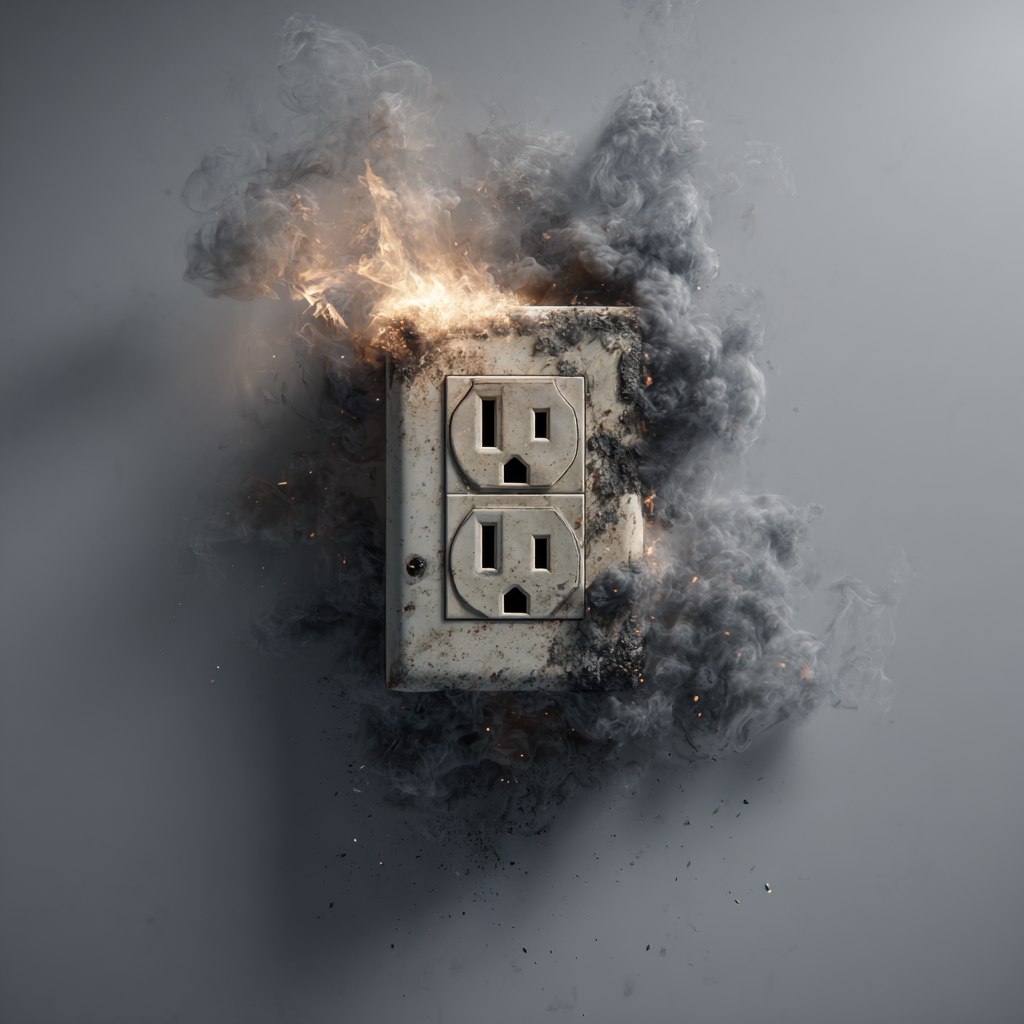We all do it. The holidays roll around, and suddenly every available outlet is teeming with lights, decorations, and maybe a new kitchen gadget. Or perhaps your home office has slowly accumulated more monitors, chargers, and peripherals than your wall outlets can handle. It’s easy to think, “What’s the harm? It’s just a few extra plugs!”
But at T.A.P. Electric, we want to remind you that overloading your electrical outlets is not just inconvenient; it’s a serious fire hazard.
The Hidden Danger: Why It Happens
Your home’s electrical system is designed to safely handle a specific amount of power. Each outlet and circuit has a limit. When you plug too many devices into a single outlet or power strip, you’re asking that circuit to draw more electricity than it’s built for.
This excessive demand generates heat. While you might not see it, inside the walls, behind your outlets, and within the cords themselves, temperatures can rise to dangerous levels.
The Warning Signs You Shouldn’t Ignore
Keep an eye (and ear, and nose!) out for these red flags:
Warm outlets or cords: If an outlet or plug feels warm to the touch, it’s a sign of overheating.
Flickering lights: This can indicate an overloaded circuit struggling to provide consistent power.
Frequent tripped breakers: Circuit breakers are designed to trip (shut off power) when a circuit is overloaded. If this happens often, it’s a clear warning.
Burning smell: A distinct burning odor coming from an outlet or appliance is an immediate cause for concern.
Sparks or buzzing sounds: These are definite signs of an electrical problem that needs immediate attention.
How to Stay Safe and Prevent Overloads
The good news is that preventing electrical overloads is straightforward:
Distribute your devices: Instead of plugging everything into one wall, spread your appliances and electronics across different outlets and, if possible, different circuits in your home.
Use power strips wisely: While power strips offer multiple outlets, they don’t increase the amount of power available to the wall outlet they’re plugged into. Use them for low-power devices. Avoid “daisy-chaining” (plugging one power strip into another).
Upgrade when necessary: If you constantly find yourself short on outlets or tripping breakers, it might be time for an electrical panel upgrade or the installation of new dedicated circuits. This is especially true for high-demand appliances like air conditioners, space heaters, or major kitchen appliances.
Inspect cords and outlets: Regularly check your electrical cords for fraying or damage, and ensure outlets aren’t loose or cracked.
Your safety, and the safety of your family and home, is paramount. If you’re concerned about your electrical system, have questions about outlet capacity, or need to expand your home’s electrical capabilities safely, don’t hesitate to call the professionals.
At T.A.P. Electric, we’re dedicated to providing safe, professional, and reliable electrical service across Southeast Iowa. Give us a call today for a consultation or service appointment!
